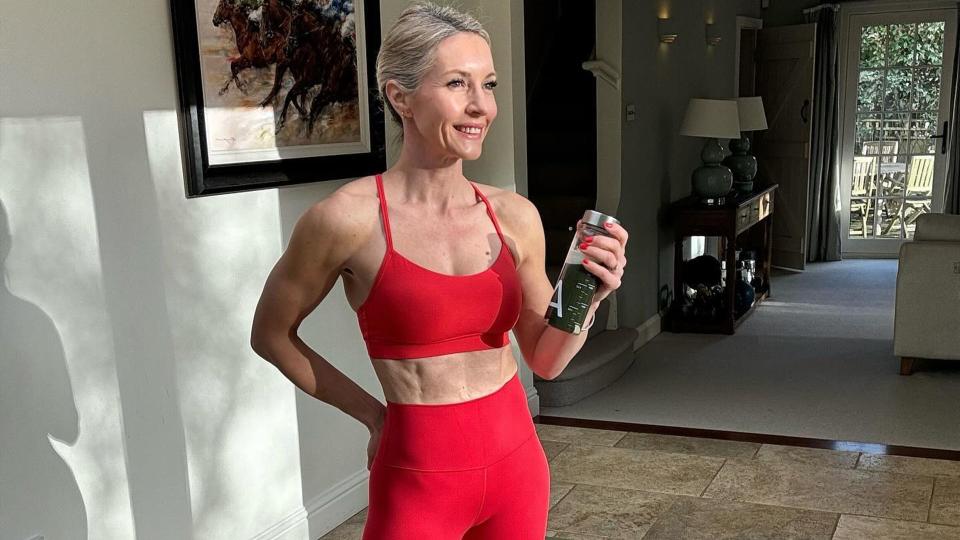What a 51-year-old PT wants you to know about exercise in menopause

We all know that menopause brings about a lot of physical and psychological changes - from hot flashes and night sweats to mood swings and fatigue - which makes navigating this life stage challenging to say the least. And while hormone replacement therapy provides a great remedy, there's another way that holds significant promise for fixing your symptoms too: your exercise routine.
Research has proven the profound impact that exercise can have on managing menopause symptoms. And while energetic cardio workouts can certainly have fitness benefits and mood-enhancing effects, now,experts are recognizing the benefits of a gentler, slower-paced routine of weight training and stretching to help alleviate the discomforts associated with menopause too
One of Instagram’s most famous fitness experts, Caroline Idiens aka@carolinescircuits, 51, shares six easy fitness tips we can all do to help manage our most common menopausal symptoms

Painful joints? Prioritise warm-up and cool down
Caroline suggests beginning and ending your workout routines with a thorough warm-up and cool-down. Mobilising joints and warming up muscles is essential, especially considering the decline in oestrogen we see in menopause. Spend at least five to 10 minutes on dynamic stretches to lubricate joints and muscles, promoting flexibility.
“Whatever your fitness routine, joint pain can be a common issue during this life stage,” Caroline explains. “At the end of your workout do some static stretches to cool down and release the tension in the muscles too.”
You may also like
What menopause experts want you to know about your new era What menopause experts want you to know about your new era
Meno belly? Embrace strength training
Making strength training a cornerstone of your fitness routine is vital for managing your waistline and also improving your posture too.
“Not only is resistance training essential for our bone health and muscle mass during menopause, it has a whole range of other benefits too," explains Caroline. "Lifting weights can help with menopause weight gain by raising our metabolism as well as improvising our posture, and it has a huge impact on our mental wellbeing at a time when we may feel more stress and anxiety too.”

Feeling down? Go for a walk
While Caroline recognises that cardio can be great for boosting your mood, she suggests limiting high-intensity sessions and focusing on activities such as walking for both physical and mental benefits. "I still love HIIT sessions but limit them to one or two per week. Walking is brilliant and a daily walk is highly recommended for both the physical and mental benefits that it brings to be outside in nature.”
RELATED: I went for a walk every day - here's what it did to my stress levels
Stressed or anxious? Try yoga and pilates
"Yoga and pilates are great at this stage, not only for relaxing and alleviating stress but for stretching, flexibility and taking the muscles through their full range of movement."

Weight gain? Fit functional fitness into your daily life
Caroline suggests centering your workouts around functional fitness to help manage your weight and strengthen muscles too. “Future-proofing our bodies and doing exercises that help with our daily movement will also help us stay injury-free,” says Caroline. “Think gardening, house work, grocery shopping and carrying children (and grandchildren)! We need our strength to be able to do these pain-free and into the future.”
Find out more about Caroline and visit HELLO!'s Second Act hub for inspirational stories of women living their best later life.




